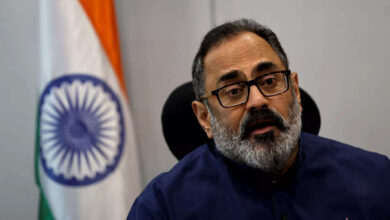
Staff costs would rise by a modest 12% in FY24: Study
According to a study conducted by IMA India, it is projected that the overall people costs in India will experience a modest increase of 12% in the fiscal year 2023-24. This growth rate is expected to be higher for Indian companies compared to their multinational corporation (MNC) counterparts. The study suggests that the upcoming fiscal year will be focused on consolidation, with fixed costs rising at a slower pace and giving way to variable, performance-driven payouts.
In the past two years, there has been a significant surge in people costs driven by substantial pay raises and a surge in hiring. However, this upward trend is now showing signs of moderation. The study reveals that in the fiscal year 2022-23, overall people costs had risen by 15%, indicating a slight deceleration compared to previous years.
The anticipated rise in people costs in the upcoming fiscal year is expected to be more sustainable and aligned with performance-based compensation structures. As organizations seek to optimize their cost structures, there is a growing emphasis on rewarding employees based on their individual and collective contributions to the company’s performance. This shift towards variable pay-outs provides a more balanced approach to compensation, linking remuneration directly to business outcomes.
The study highlights that Indian companies may face relatively higher people costs compared to MNCs. This can be attributed to market dynamics, wage inflation, and specific industry trends within the Indian context. However, the report suggests that overall cost pressures are expected to stabilize, indicating a more measured approach to managing people’s costs in the coming fiscal year.

As organizations navigate the evolving business landscape, they will likely adopt strategies that optimize their cost structures while ensuring employee motivation and engagement. Balancing fixed and variable components of compensation can provide flexibility and align rewards with performance, enabling organizations to attract, retain, and motivate talent effectively.
It is important to note that the findings of the study are based on the analysis and projections conducted by IMA India. Organizations should consider the unique dynamics of their respective industries and market conditions while formulating their people cost strategies.
Indian companies are also expected to post sharper year-on-year drops in people costs. The services companies saw people expenses rise by 15.9% in FY22, which dipped to 12.4% in FY23, while that for industries were 12.4% and 11.4%, respectively. According to the report, retail services, consumer durables and IT and ITeS captives all expect a 5-7 percentage point fall in FY24, while resource-based industries are projecting a mild rise.
The study reveals that Indian companies are anticipated to witness more pronounced year-on-year declines in people costs. Services companies witnessed a rise of 15.9% in people expenses in FY22, which then decreased to 12.4% in FY23. Similarly, industries experienced a rise of 12.4% in FY22, followed by a decrease to 11.4% in FY23.
The report highlights that sectors such as retail services, consumer durables, and IT and ITeS captives are projecting a 5-7 percentage points decline in people costs for FY24.
On the other hand, resource-based industries are expected to observe a mild increase.In FY24, businesses in various industries and at different levels are expected to offer smaller increases in fixed pay. The projected average increment for CEOs’ fixed pay is 9.8%, slightly lower than the 10% in FY23. Similarly, most CXO positions are likely to see fixed-pay increments just below 10%, while specialist positions leading functions such as risk, legal, sustainability, growth, and supply chain are expected to have increments at or below 9%.

These projections indicate a trend of more moderate increases in fixed pay across senior leadership roles in the coming fiscal year.In the coming year, the total cost-to-company (CTC) and increments are expected to accelerate, with a rise from 11.7% to 12.4% for CEOs. This indicates that while fixed-pay increments may be more moderate, the overall CTC will experience a higher growth rate. The gap between fixed-pay increases and CTC increases is projected to widen, particularly for CEOs, moving from 1.7 percentage points in FY23 to 2.6 in FY24.
This trend suggests that the share of variable pay as a part of the total compensation package will increase. The study indicates that variable pay, which is typically linked to individual performance and business outcomes, will play a larger role in determining overall compensation. While business performance is considered important, respondents emphasized that individual performance carries the highest weight when determining CXO position increments.
These findings highlight a shift towards a more performance-driven compensation structure, where individual contributions and achievements will significantly impact the total compensation package. It signifies the growing emphasis on rewarding employees based on their personal performance and aligning their incentives with the company’s goals and objectives.While individual performance holds significant weight in determining pay decisions, the study highlights that at the CEO and CFO levels, company performance plays a crucial role.
Companies that prioritize business performance demonstrate a strong positive correlation between revenue and net profit growth and increments for top-level executives.
The study reveals that company performance is the next important factor in determining pay increments after individual performance. For CEOs and CFOs, the ability to drive and deliver favourable business outcomes is highly valued. Companies that achieve substantial revenue and net profit growth are more likely to offer higher increments to their top executives.
Leadership ability is another aspect that holds significance in pay decisions. The study suggests that companies place emphasis on the leadership capabilities of their top executives when determining their compensation packages. Practical leadership skills, including strategic vision, decision-making, and the ability to inspire and motivate teams, are factors that influence pay increments.

Combining the factors of individual performance and company performance, it becomes apparent that individual delivery carries a disproportionate share in pay decisions. While company performance is a crucial factor, individual contributions and achievements hold considerable weight. The study indicates that companies recognize and reward top executives who consistently demonstrate exceptional performance and drive positive results for the organization.
The findings underscore the importance of aligning individual performance with company objectives. By incentivizing executives based on their ability to deliver both on an individual level and in driving company success, organizations create a performance-driven culture and align the interests of their top talent with the overall goals of the company.
It is important to note that pay decisions are complex and multifaceted, and organizations may have varying approaches and considerations based on their specific circumstances. However, the study highlights the significant role played by both individual and company performance in determining pay increments for top-level executives, emphasizing the importance of aligning individual contributions with overall business outcomes.




